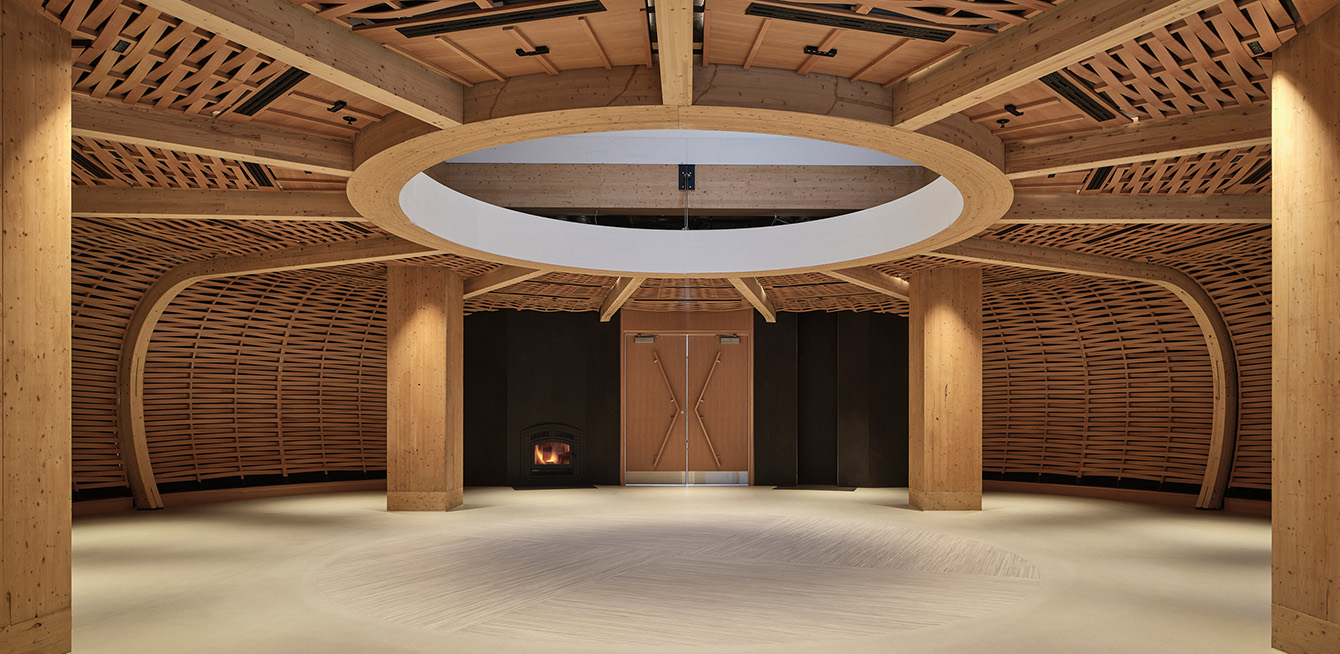
Embracing Indigenous architecture values in acoustical designs
Acoustics ensures everyone in the community can be heard
Land-based practices such as green architecture, use of natural materials, sustainability, and connection with the Earth are teachings Indigenous peoples have valued for centuries. As we all continue to reflect on the truth of the past on the path to reconciliation, more architects are embracing Indigenous values in their design, so everyone using a space can benefit. Aercoustics’ goal is to deliver effective acoustic performance for Indigenous design and Indigenous architecture in construction.
Companies wanting to include Indigenous values in a design must consult with the community before construction begins. It is not enough to just have a ceremony when the building opens. Incorporating the right approach and Indigenous architecture principles from the beginning is crucial.
Changing the design narrative means more Indigenous architects and consultants in the building process. It is a collaborative approach that brings more mindfulness to construction. For example, the winning design for the new Art Gallery of Nova Scotia was a partnership between elder Lorraine Whitman, KPMB, Jordan Bennett Studio, and architect Omar Gandhi. The monumental project was inspired by the Mi’kmaq ways of knowing and involved the community from the very beginning. As the acoustic design consultant, the Aercoustics team incorporated some of these principles in the early stages of this project.
Round rooms and sound
Circular rooms are an important aspect of Indigenous architecture because they are inclusive. However, round rooms with curved walls cause challenges from an acoustical perspective. If the sound is not treated correctly, all of it comes back to the centre of the room. If people are within the focal point, they receive all of the sound happening in the room but they will not necessarily be able to understand it.
The solution is to design acoustical treatments that reflect the narrative of the building. Our recent project involving the Centennial College A-Building Expansion included a round room, a central gathering space modeled after traditional Anishinaabe roundhouses. Aercoustics consulted with Indigenous architects and recommended a porous basket-weave material to absorb sound in the round room and remove the focal-point issue. This breaks up the sound enough to remove the reflection while showcasing traditional Indigenous architecture and artwork. For the Thunder Bay Courthouse, custom-designed timber diffusion was used in the round, domed Aboriginal Conference Settlement Suite to break up the sound coming back to the middle and a furniture piece was installed to create an exclusion zone, so people cannot physically be within the focal point.

Respecting values and traditions
Indigenous cultures which maintain their own language have higher resilience and a greater sense of community. Languages are nuanced, and one letter or sound can make a significant impact on the meaning. Communication is crucial in any learning or community environment. We are in the International Decade of Indigenous Languages and half of Indigenous languages are in danger worldwide, so clarity of speech from an acoustic design perspective is really important.
Acoustical design considerations for Indigenous-inspired buildings should also account for ceremony and tradition. Smudging ceremonies usually happen in spaces with acoustic materials, so there is a potential that the smell of the smoke will be absorbed. Potentially higher levels of exhaust meant to circulate air to avoid this issue can have a knock-on effect for the sound in a space and this should be considered in the design.
Drumming rooms can be another challenge to sound, especially if they are in the heart of the building. Drum sounds can be particularly tricky to control because they are a low frequency noise that can easily move along the building structure. For a community center project in Bridletowne, Scarborough, Aercoustics designed a box-in-box so the drummers can come together and connect without the drumbeat overpowering other areas of the centre.
Embracing Indigenous design
Most major projects seem to be incorporating Indigenous values into their buildings and integrating them into the design. There is also a growing number of Indigenous-led design firms to help developers and builders respect cultures and integrate values before any building takes place.
Aercoustics has supported and integrated Indigenous architecture in multiple buildings to ensure the rooms serve the community and everyone’s voice is heard. Working with Indigenous-led firms, we strive to create acoustical design options that promote the same values and incorporate the elements of green architecture, natural materials, sustainability, and connection into each project.
